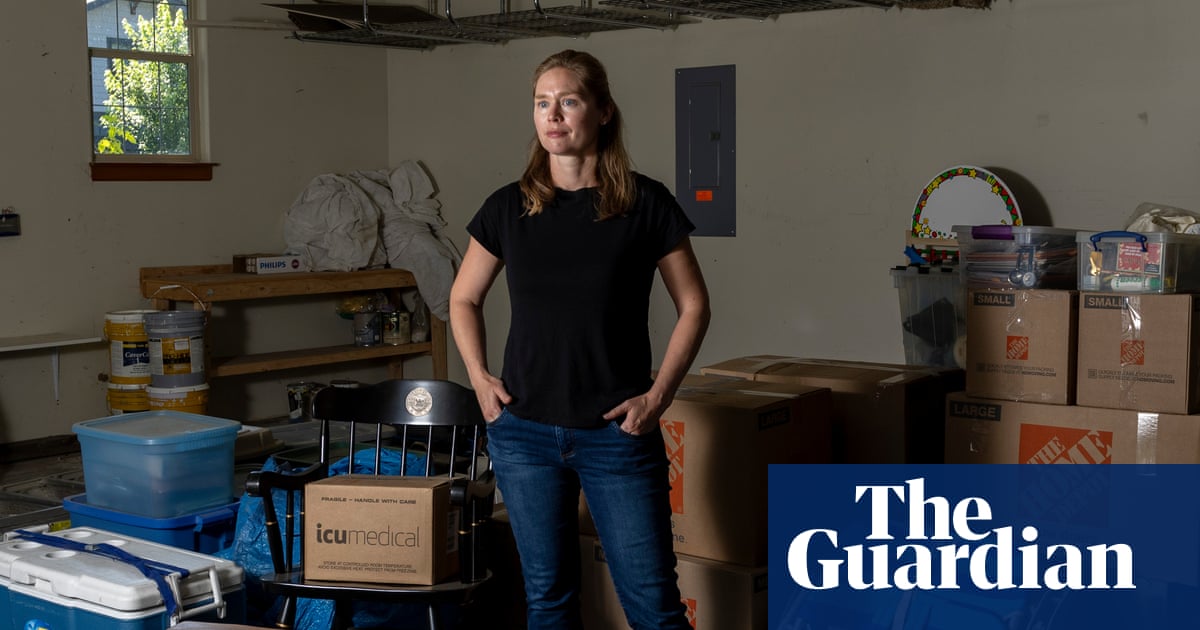Across Idaho, doctors are leaving, looking for states where politics don’t dictate how they practice medicine. The consequences of Idaho’s anti-choice laws hit Sandpoint fast and hard, hollowing out medical care for women within months. For years, the town had a maternity ward that delivered as many as 350 babies every year – now it has nothing. The OB-GYN ward shut down this spring and doctors have been fleeing the state in a steady stream, seeking shelter in places where their work doesn’t put them at risk of criminal charges or big lawsuits.
It’s become a gamble, getting pregnant and giving birth in a place that no longer has a maternity unit or any obstetricians. Sandpoint is small, fewer than 10,000 people, but it’s been a medical hub for a rural region of 50,000 in north Idaho, Montana and Washington.
For people like Sanders, pregnancy care in town is no longer an option. This is what happens when a state government that’s been itching to ban abortion enacts some of the most restrictive laws in the country and ensnares all of reproductive health and a good share of routine medical care in its dragnet. But the women of Sandpoint are clear about one thing they want others to know: this can happen anywhere in the post-Roe United States. Nowhere is as safe as you might believe and the battle won’t stop at state borders.
Idaho is one of several states that had trigger laws: immediate abortion restrictions that went into effect when Roe v Wade fell a year ago. In August of 2022, the state enacted a near-total ban on abortion with exceptions only if the mother’s life is in danger, or in the case of rape and incest. Those instances require a police report to be filed. The state also adopted what it called an “abortion trafficking” ban, which bars taking minors to other states for abortion care. Family members can sue doctors for thousands of dollars if they perform an abortion, and doctors may face criminal fines and even prison time.
Idaho also became the only state in the country to stop tracking maternal mortality rates. Activists say it’s like they don’t want anyone to know how deadly their decisions might be.


This is the best summary I could come up with:
It’s a scene out of an American dream: a stretch of city beach buzzes with young families playing and laughing under the hot afternoon summer sun, moms chasing after children, splashing in the shallow ripples of Lake Pend Oreille.
Lauren Sanders relaxes among the beachgoers in a sea-green bikini that reveals her pregnant belly, keeping an eye under her sun hat on her young daughter, Gwen, who’s angling to get back in the water.
But if anything goes wrong – a last-minute emergency, a scare, an unpredicted turn - and she needs hospital maternity care, she’ll be put into an ambulance and driven over the two-lane highway to a larger city half an hour away.
The OB-GYN ward shut down this spring and doctors have been fleeing the state in a steady stream, seeking shelter in places where their work doesn’t put them at risk of criminal charges or big lawsuits.
The raft of extreme abortion laws left doctors like Huntsberger unsure if they could continue to practice any kind of family medicine in Idaho, where untrained political figures now have greater say over medical decisions than physicians.
Along with its ramping up of abortion restrictions this year, the legislature enacted a law banned gender-affirming care for minors and the governor signed a strict “bathroom bill” mandating that restrooms and changing rooms be segregated by the gender a person is assigned at birth.
The original article contains 2,285 words, the summary contains 233 words. Saved 90%. I’m a bot and I’m open source!